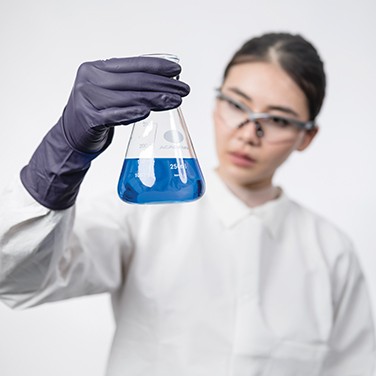Three Pillars of Glove Safety: Protection, Precision, and Comfort
By Anita McLean, Kimberly-Clark Professional Category Manager
Gloves are one of the most critical types of personal protective equipment (PPE), particularly in the laboratory. But finding the right gloves can be challenging. According to Health & Safety International , “even small deficiencies in glove design may reduce grip, strength, and manual dexterity.”1
Gloves must be suited for the task at hand without compromising precision, protection, or comfort. For example, bulky gloves may provide the right chemical protection but reduce dexterity and increase the time it takes to complete a task. So scientists might choose thinner gloves to maintain dexterity, sacrificing chemical protection and requiring frequent changes. Worse, some may choose to not wear gloves at all, risking injury or chemical exposure.
Consider these statistics:
- 30 percent of people who experienced a hand injury were wearing the wrong type of glove2
- The indirect costs of a worker injury can be four to 10 times the amount of direct medical costs3
- The average work time lost for a hand injury is six days4
The right gloves provide adequate protection while delivering precision and comfort, protecting the science as well as the scientist. These attributes may be hard to find in a single glove, but without them scientists face higher risk of injury and contamination.
Finding the Right Gloves
Here are some things to keep in mind when selecting gloves.
Protection
Laboratory workers are routinely exposed to chemical agents. According to an international safety study, 21 percent of respondents had been injured in the lab more than once.5 And in a recent laboratory PPE poll, 85 percent of respondents said that getting people to consistently wear gloves is their biggest challenge.6
Protection is important in glove selection, but it can vary from one glove to another. These questions can help you identify the level of protection gloves provide:
- Do the gloves resist a wide range of chemicals, including cytotoxic drugs?
- Do they offer chemical splash protection?
- Do the materials reduce the risk of allergic reaction?
- Can the gloves protect against punctures, lacerations, and other risks?
Search for a glove that offers the right protection for your specific needs first. Then think about precision and comfort.
Precision
Good ergonomics are crucial to meeting user needs. Pipetting, microscopy, operating microtomes, and other routine procedures can put researchers at risk for repetitive motion injuries that result in inflamed tendons, pinched nerves, and restricted blood flow.7
Gloves with gripping surfaces can help prevent tendonitis and other injuries by requiring less force from the fingers.8 Select gloves with the right characteristics to reduce the risk of muscle fatigue and injury while providing good wet and dry grip. For lab environments, look for thin, protective gloves that offer tactile sensitivity and enhanced dexterity through textured fingertips or other features.
Comfort
Uncomfortable gloves have been linked to reduced compliance and increased risk of injury, according to Health & Safety International . The article states that “uncomfortable glove materials may reduce blood circulation, cause numbness, limit finger and hand motion, cause muscle fatigue, and reduce work performance.”9
Choose gloves that enhance comfort and deliver the right level of protection. This may include materials that protect while reducing overall thickness, accelerator-free polymers that reduce the potential for skin irritation, and more. And look for certified ergonomic comfort to ensure comfort in use without compromising protection.
Product Sustainability
Gloves that offer protection, precision, and comfort are more likely to last longer, reducing glove waste.
Labs and cleanrooms can reduce glove waste even further by diverting used gloves from landfills through The RightCycle Program. This groundbreaking service from Kimberly-Clark Professional lets labs turn their used nitrile gloves, safety glasses, and single-use apparel items into new plastic products and other consumer goods.
Since 2011, The RightCycle Program has helped research facilities, universities, nonprofits, and other businesses divert more than 1,200 metric tons of PPE from landfills. With this program, safety and sustainability truly go hand in hand.
For more information about choosing hand protection that provides precision, protection, comfort, and sustainability, contact your Fisher Scientific representative.
- Health & Safety International.
- U.S. Bureau of Labor Statistics.
- Safety Management Group.
- 4. U.S. Bureau of Labor Statistics.
- Nature , Vol 493.
- The PPE Compliance Conundrum , Dan Scungio, MT (ASCP), SLS, CQA (ASQ).
- U.S. Department of Labor.
- Workplace Safety North.
- Health & Safety International.




